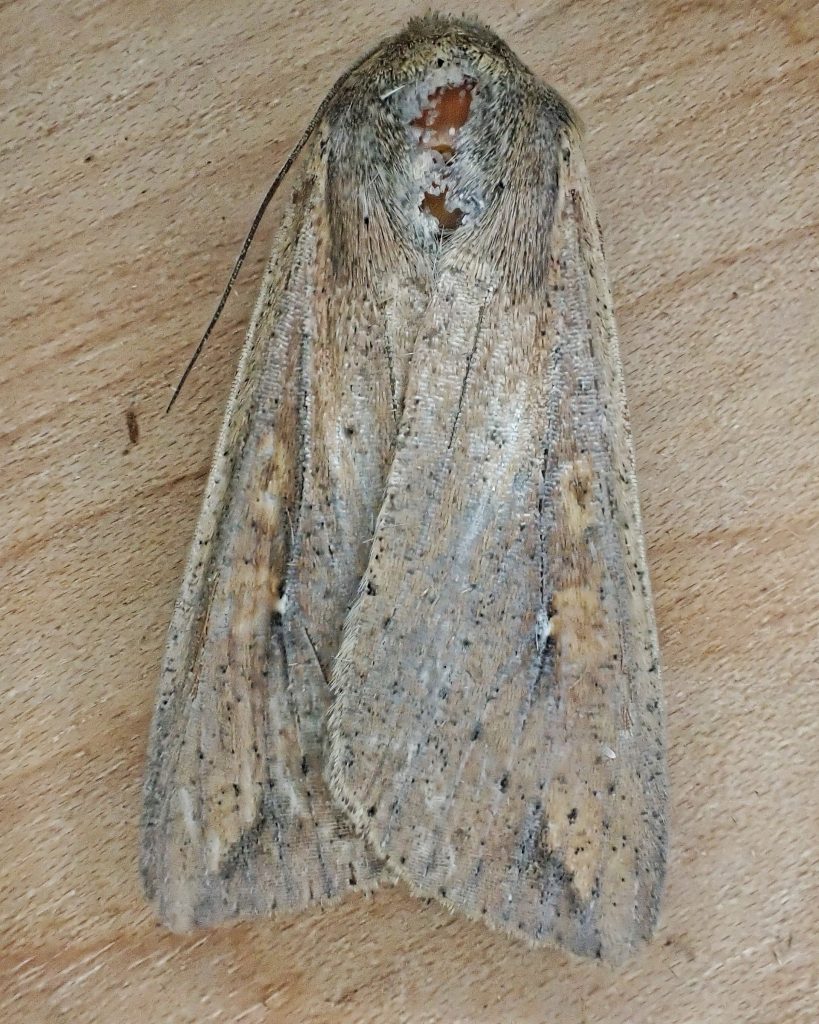
This was one of the three large Noctuids I found at the bug zapper on the 3rd Night of Moth Week. Like the Trichoferus campestris I posted yesterday, they are a pest species, although a native, homegrown one that has adapted to utilize our agricultural grasses, such as corn, grain, and hay. And like that pest beetle they have been extensively studied, which I guess just goes to show that if you want folks to start paying attention you need to start costing them money. Take particular note of the parasitoids (a parasitoid is an insect whose larvae parasitize the larvae of another species, usually killing it in the process) that are listed. Almost every moth I’ve profiled probably has a list about that long, but instead I usually end up writing ‘Presumably a host for parasitoids in Hymenoptera and Diptera, but I can find nothing specific for this species.’
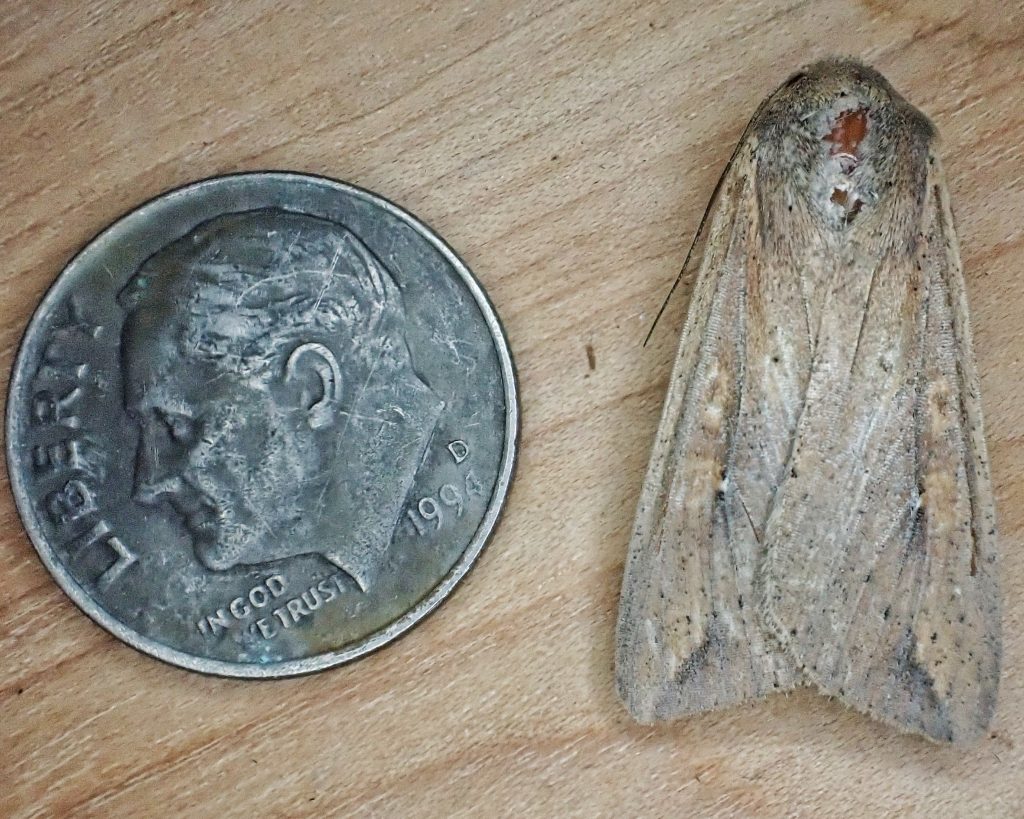
Armyworm moths are major agricultural pests, and some years they do millions of dollars of damage. They are more prevalent in southern climes, but periodically have massive northward migrations, and because of the global warming aspect of climate change they are managing to establish populations in places that were heretofore untenable. They get their name from the fact that once their larvae have consumed all of the resources in a given area, they will ‘march’, en masse, toward their next food source. Unfortunately this moth was so enamored with the bug zapper that I couldn’t get any in situ photos, so this profile is text heavy and photograph poor.
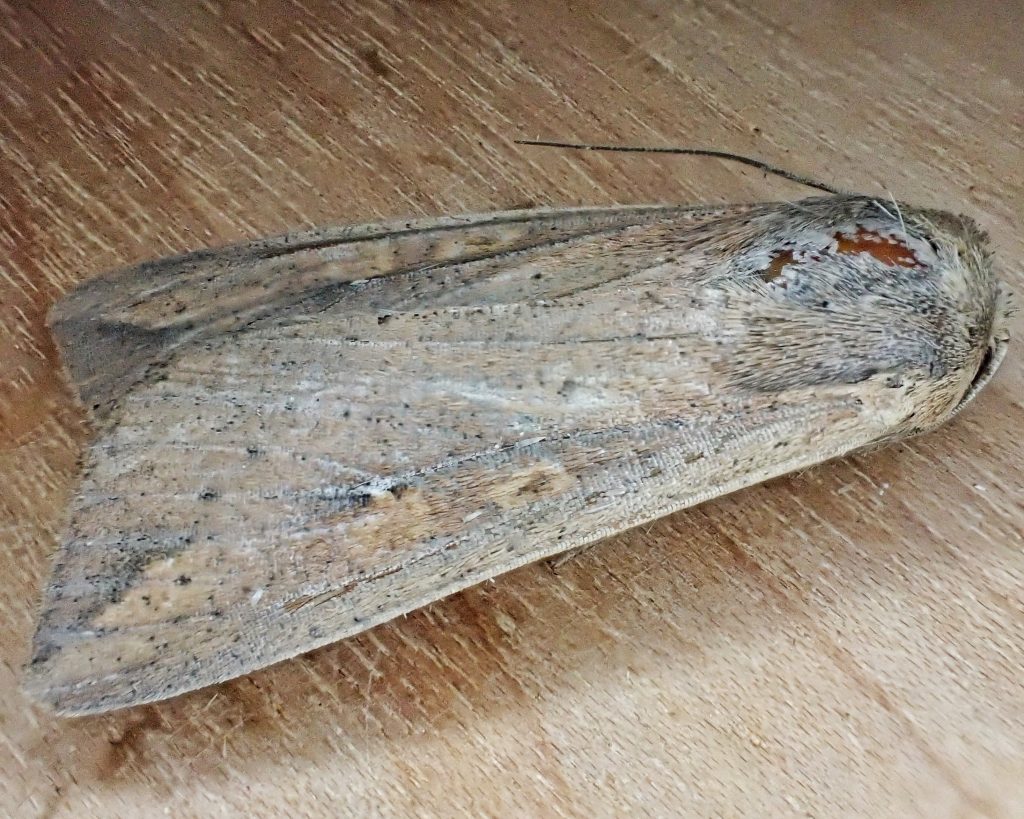
Description– “Wingspan 35-47 mm…forewing tan, often tinged with orange and lightly speckled with black; white along veins; PM line a series of small widely-spaced black dots; discal spot white; black-shaded line slants inward from apex; hindwing grayish-brown with tan fringe.” Species Mythimna unipuncta – Armyworm Moth – Hodges#10438 – BugGuide.Net
Similar species– “Adults of this species can be identified by the speckled tan color with orange-red in the cell, a small white spot on the distal cubital vein at the end of the cell, and the oblique gray mark on the distal wing which ends at the apex. This species is the least streaky of any member of the tribe Leucaniini.” PNW Moths | Mythimna unipuncta
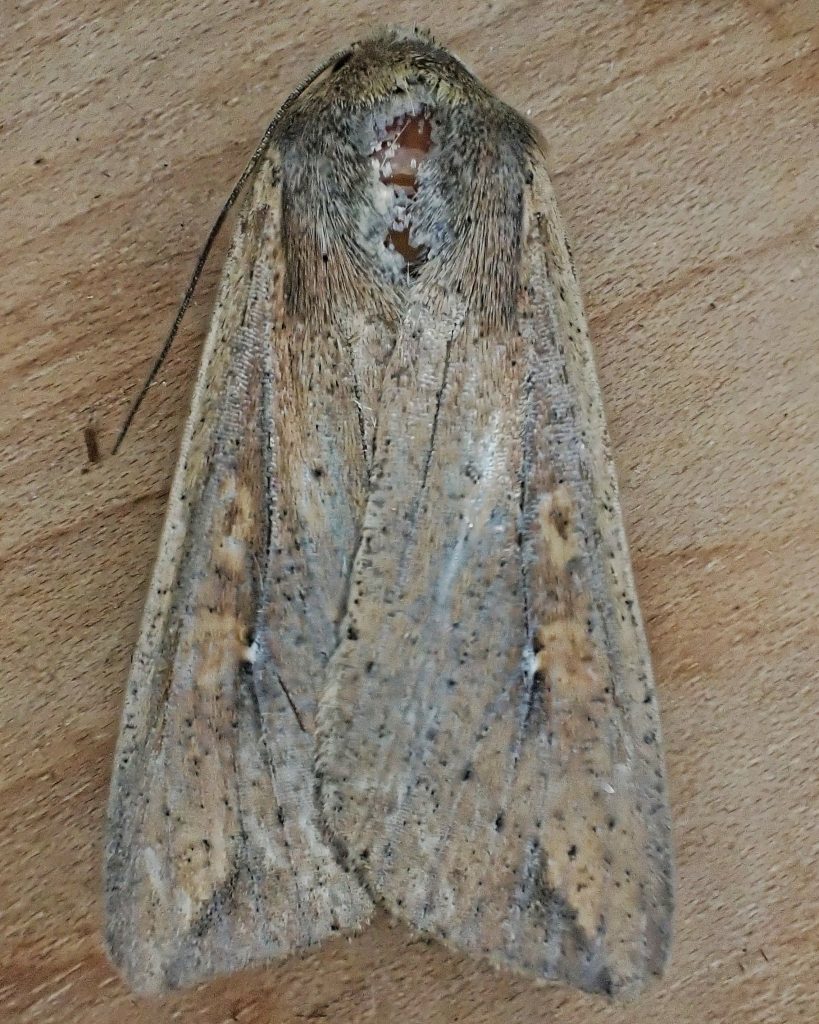
Habitat– “Mythimna unipuncta is vagile and disperses widely through a variety of habitats at low to middle elevations. It is most common in agricultural settings on both sides of the Cascade Mountains, and is usually rare and sporadic in more natural habitats except for open ponderosa pine forests east of the Cascades. This species is migratory and may not be a permanent resident in colder and wetter regions of the Pacific Northwest.” PNW Moths | Mythimna unipuncta
Range– “The North American range of this species includes most of Central America, the United States, and southern Canada from Coast to Coast. It ranges furthest north in Saskatchewan and Alberta, although vagrants are collected even further north from time to time. It also occurs in northern South America and western Eurasia…This species reaches its northern limit along the West Coast in southern British Columbia. It is found west of the Cascade Mountains from southwestern British Columbia to southern Oregon. East of the Cascades it is commonly collected in the Columbia Basin. It appears to the less common in southeastern Oregon and southern Idaho.” PNW Moths | Mythimna unipuncta
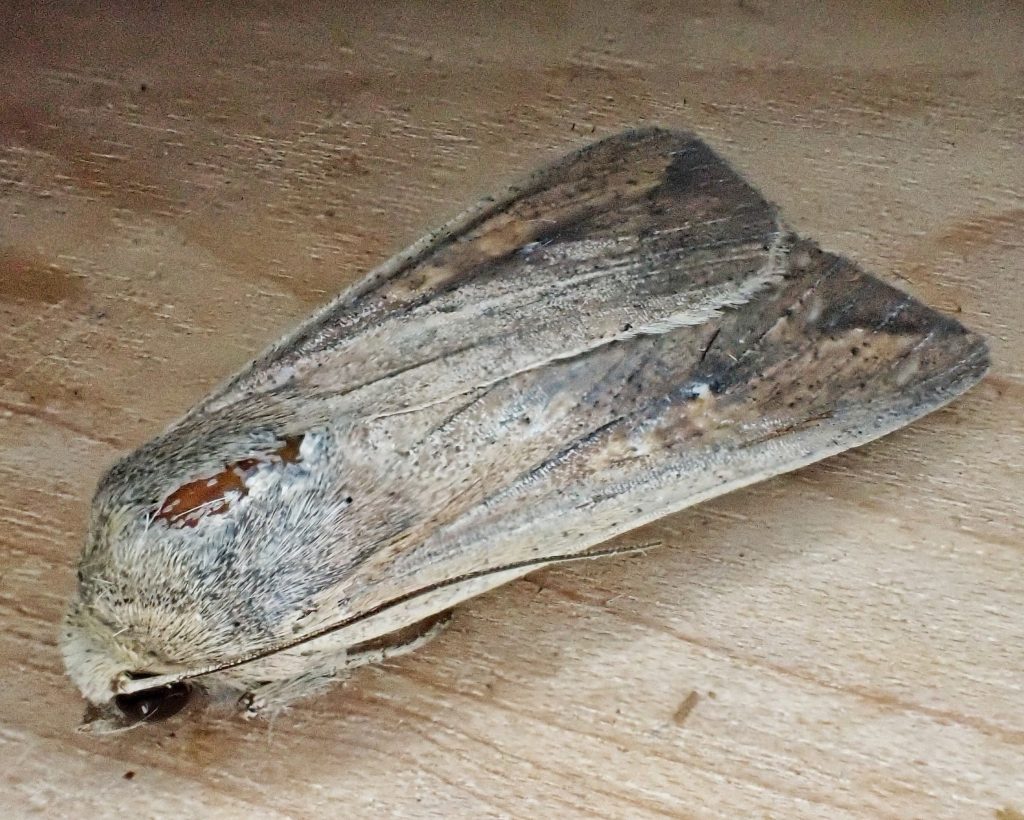
Eats– Larvae “prefers grass crops such as cereals, pasture, grass hay and corn. However, under high populations, true armyworm larvae may also feed on broad leaf plants. Adults feed on flower nectar or other sweet sources.” https://www2.gov.bc.ca/assets/gov/farming-natural-resources-and-industry/agriculture-and-seafood/animal-and-crops/plant-health/phu-true-armyworm.pdf
Eaten by-Larvae are parasitized by- Hymenoptera; Braconidae: Meteorus autographae, Meteorus commzcnis, Meteorus laphygmae, Glyptapanteles militaris, Apanteles flaviconchae, Apanteles forbesi, Apanteles laeviceps, Apanteles marginiventris, Apanteles militaris, Apanteles rufocoxalis, Microgaster auripes, Microplitis alaskensis, Microplitis, Microplitis varicolor, Rogas aciculatus, Rogas atricornis, Rogas politiceps, Rogas terminalis. Ichneumonidae: Pimpla pedalis, Netelia geminata, Netelia ocellata, Netelia sayi, Lysibia nanus, Cryptus albitarsis, Phaeogenes hebrus, Melanichneumon brevicinctor, Spilichneumon superbus, Cratichneumon brevipennis, Ichneumon ambulatorius, Ichneumon annulatorius, lchneumon canadensis, Ichneumon laetus, Carnpoletis oxylus, Meloboris marginata, Hyposoter annulipes,Hyposoter exiguae, Therion sassacus, Enicospilus purgatus,. Eulophidae: Euplectrus mellipes, Euplectrus plathypenae. Elasmidae: Elasmus nigripes; Pteromalidae: Catolaccus cyanoideus; Chalcididae: Telenomus minimus.
Diptera: Tachinidae; Peleteria texensis, Archytas apicifer, Archytas marmoratus, Athrycia cinerea, Periscepsia laevigata, Periscepsia helymus, Compsilura concinnata, Eucelatoria rubentis, Euphorocera claripennis, Exorista mella, Exorista larvarum, Triachora unifasciata, Exorista flavicauda, Winthemia quadripustulata, Winthemia rufopicta, Nemoraea leucaniae, Gymnocarcelia ricinorum, Lespesia aletiae, Lespesia archippivora, Lespesia melalophae, Madremyia saundersii, Patelloa leucaniae, Phryxe vulgaris, Phryxe pecosensis. Sarcophagidae; Helicobia rapax, Blaesoxipha hunteri
Hyperparasites- Hymenoptera: Ichneumonidae; Acrolyta nigricapitata, Gelis minimus, Mesochorus discitergus. Pteromalidae: Eupteromalus tachinae,Eupteromalus viridescens, Catolaccus aeneoviridis. Chalcididae: Haltichella perpulcra, Spilochalcis albifrons. From the paper “Sci-Hub | Insect Parasites of the Armyworm, Pseudaletia unipuncta (Lepidoptera: Noctuidae), with Notes on Species Observed in Ontario | 10.4039/ent9994-1”; probably also prey for insectivores of all classes
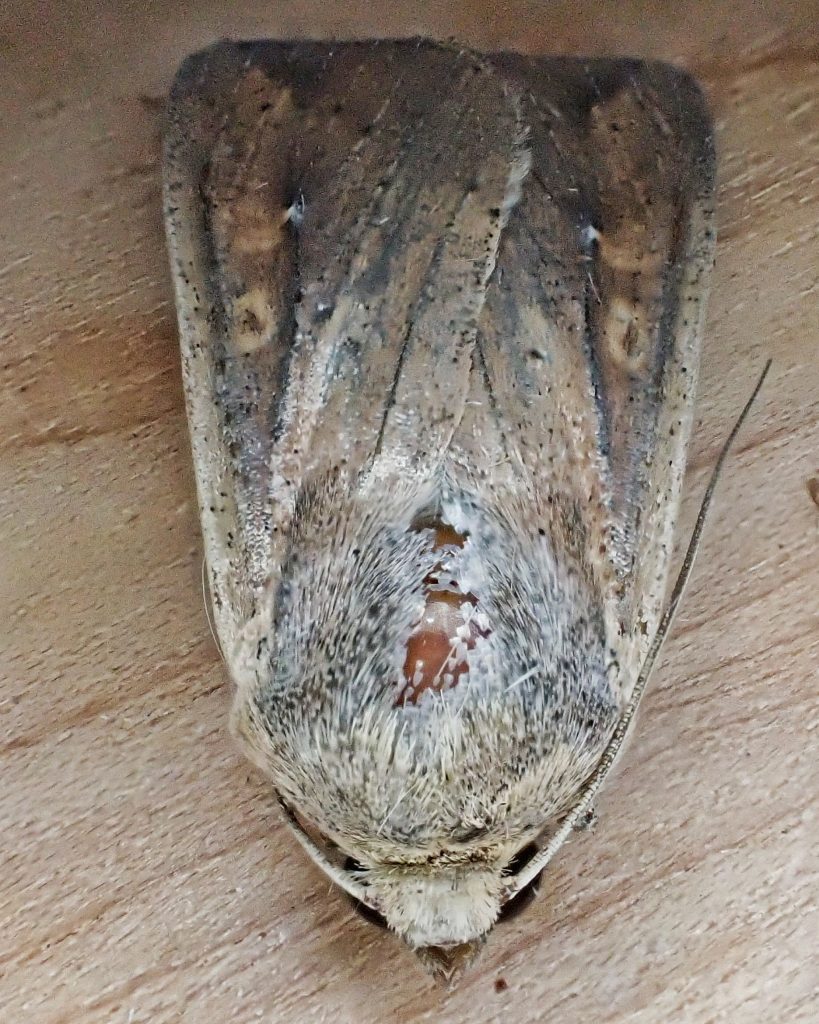
Life cycle– “ adults can live for weeks, and seek lush green grass for egg laying. Eggs are laid deep within folded grass blades and are nearly impossible to find in fields. Both egg masses and larvae can be abundant in localized areas. There are 6 larval instars, with the last two instars causing the majority of feeding damage (Figure 3). The larvae stage lasts approximately 1.5 months, depending on temperature, in which time the larvae grow from 4 mm up to 35 mm. Young larvae mostly feed during the day and are well hidden by grass blades. Older larvae are nocturnal feeders and move up the plants, and rest at the base of plants and under grass canopy during the heat of the day. Larvae are marked with stripes running the length of their body, with a yellow/brown head capsule with a netted appearance (Figure 5), while the body colour ranges from pale green while young, to nearly black when full sized. When larvae are ready to pupate, they burrow into the soil just below the surface where they remain for 1-2 weeks (Figure 6). Adult moths emerge from the soil and a second generation occurs in late summer (August-September). Adult moths are about 2cm long with brown, delta-shaped bodies and have a distinguishing white dot on each wing (Figure 4). Adult moths are nocturnal and may be seen flying around outdoor lights at night, while hiding at the base of plants or other dark protected areas during the day.” https://www2.gov.bc.ca/assets/gov/farming-natural-resources-and-industry/agriculture-and-seafood/animal-and-crops/plant-health/phu-true-armyworm.pdf
Adults active– “This species has been collected in low numbers during the spring, quite likely migrants from the south. It becomes more common during late summer and fall, peaking late in September and October.” PNW Moths | Mythimna unipuncta
Etymology of names– Mythimna is from the town of Mithimna, on the Greek island of Lesbos. Nothing is recorded as to what this references. The specific epithet unipuncta is from the Latin word for ‘single spot’, and refers to the single white spot at the end of the cubical vein.
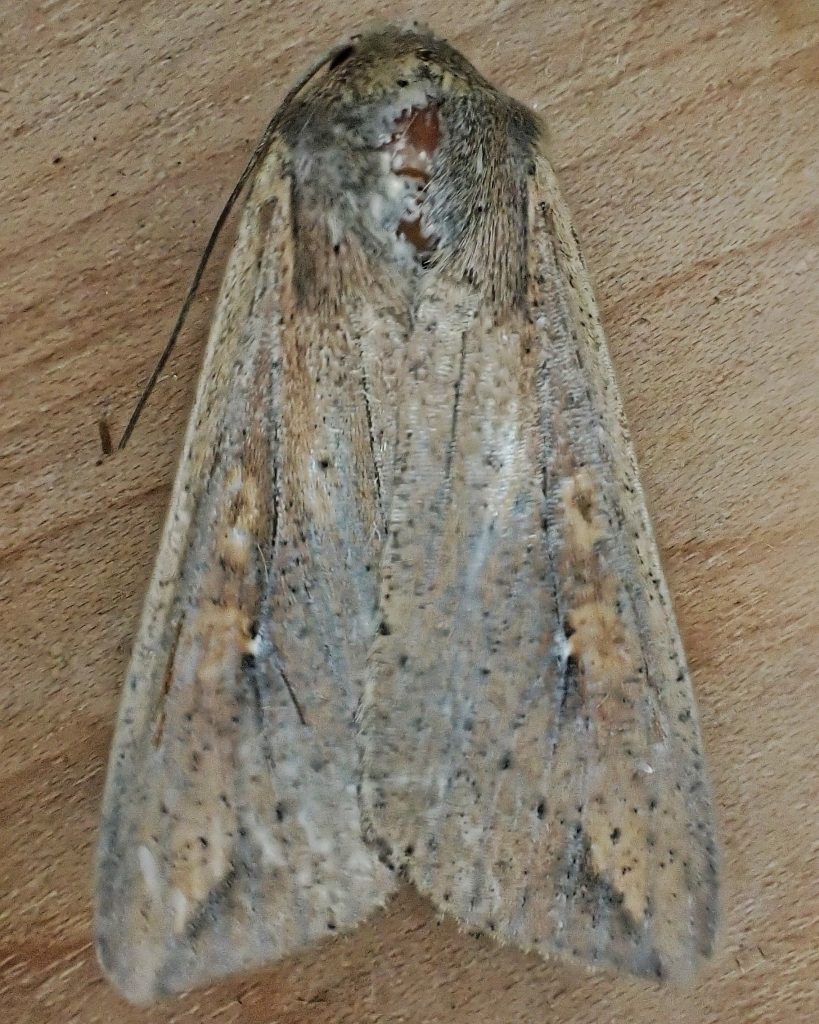
PNW Moths | Mythimna unipuncta
Species Mythimna unipuncta – Armyworm Moth – Hodges#10438 – BugGuide.Net
http://mothphotographersgroup.msstate.edu/species.php?hodges=10438
Mythimna unipuncta (rice armyworm) | CABI Compendium
http://mothphotographersgroup.msstate.edu/species.php?hodges=10438